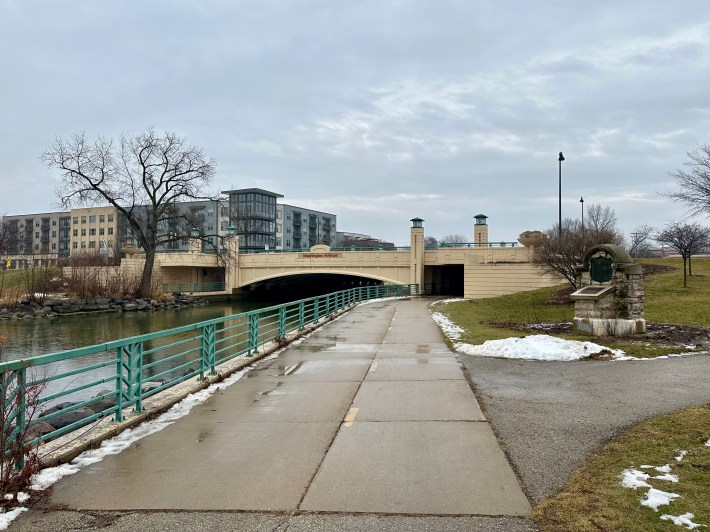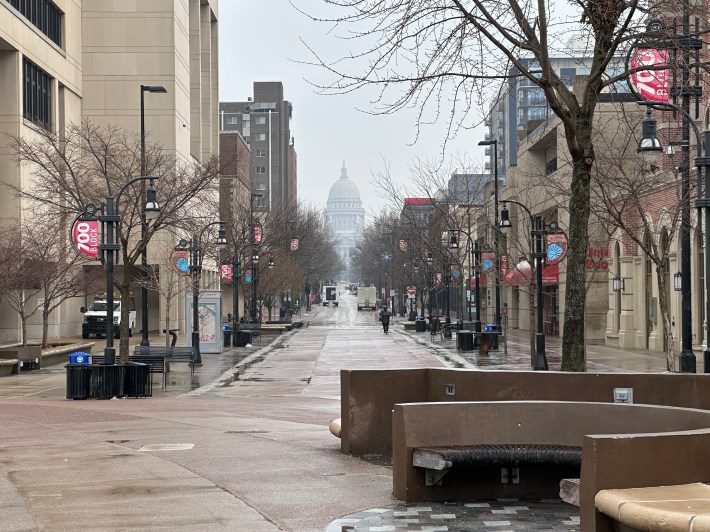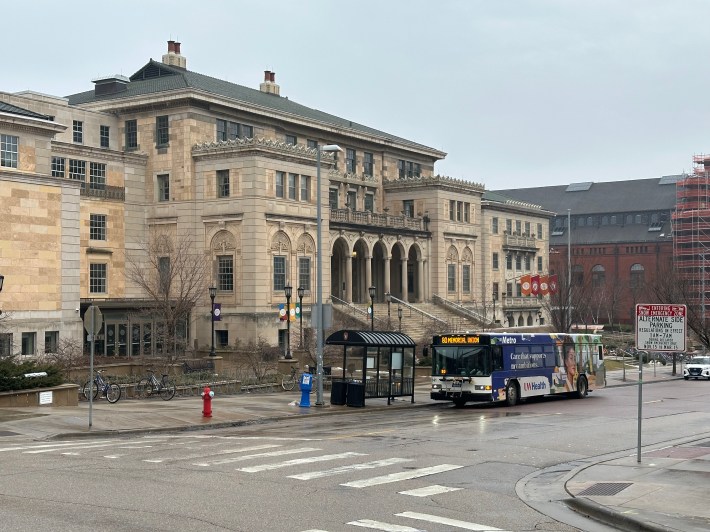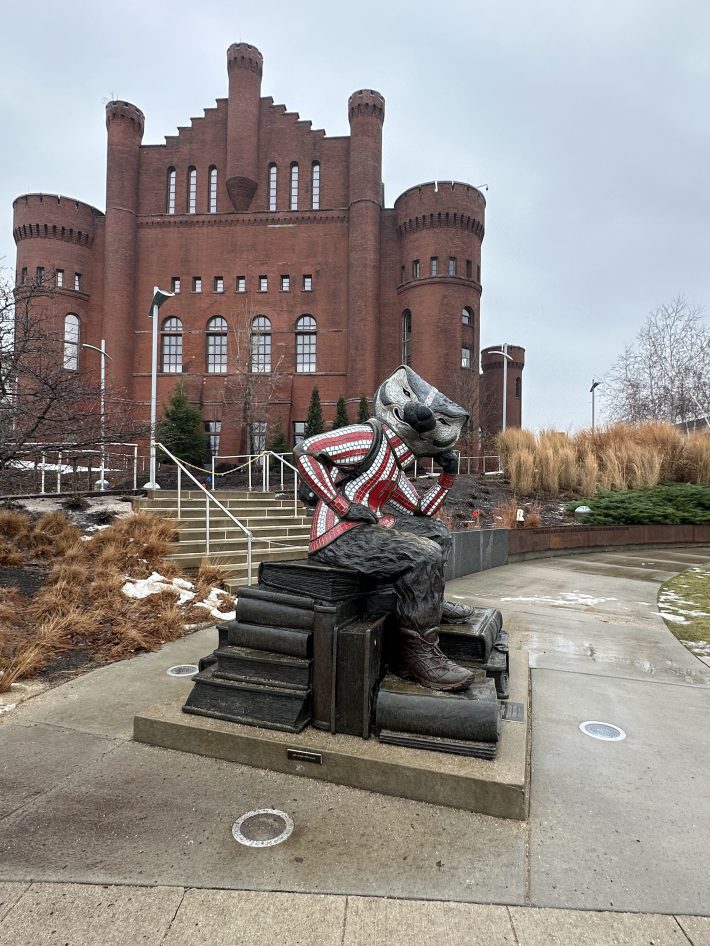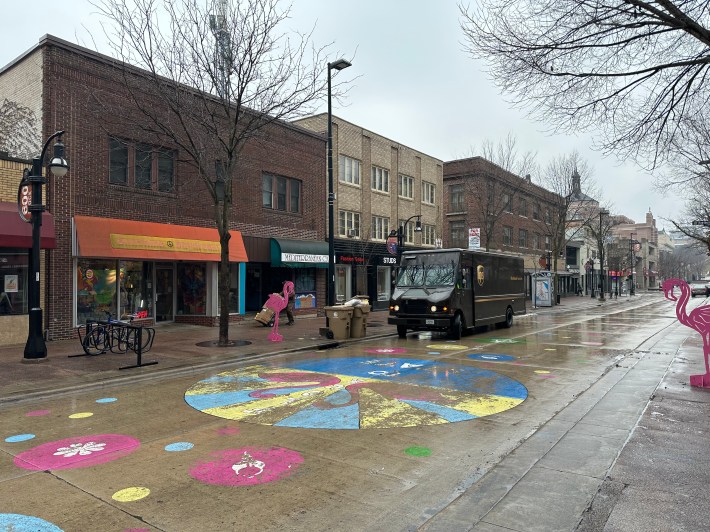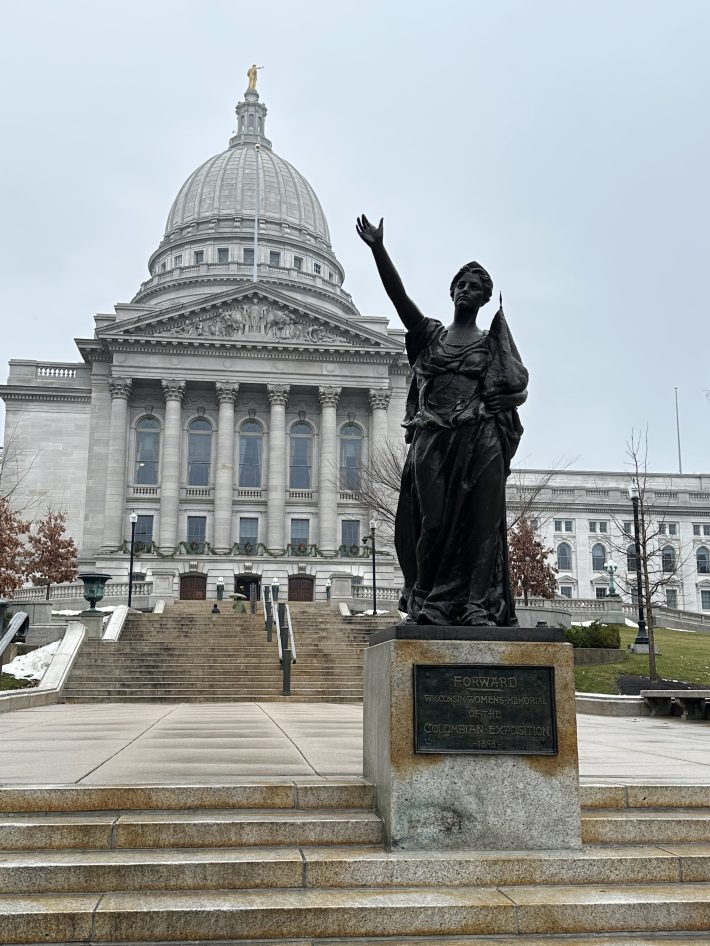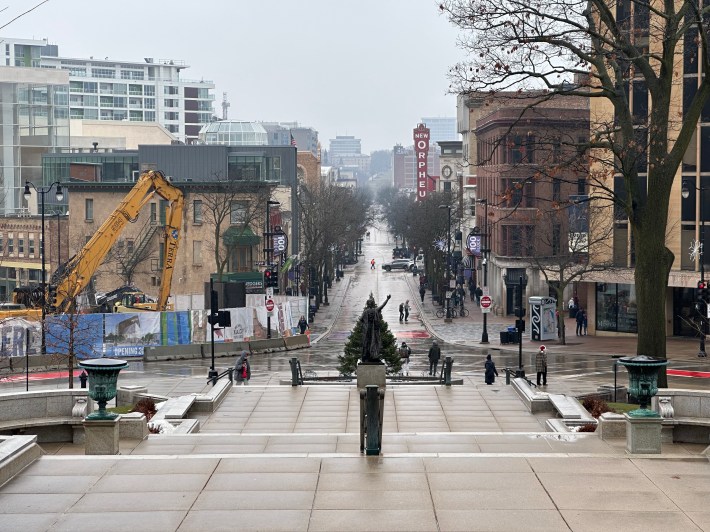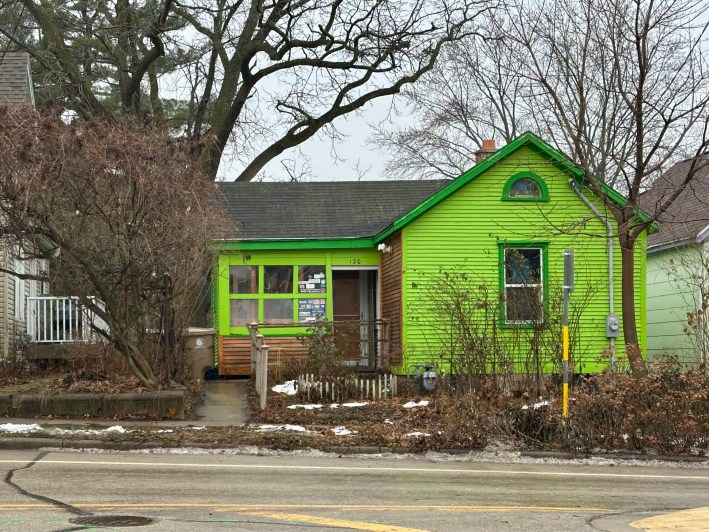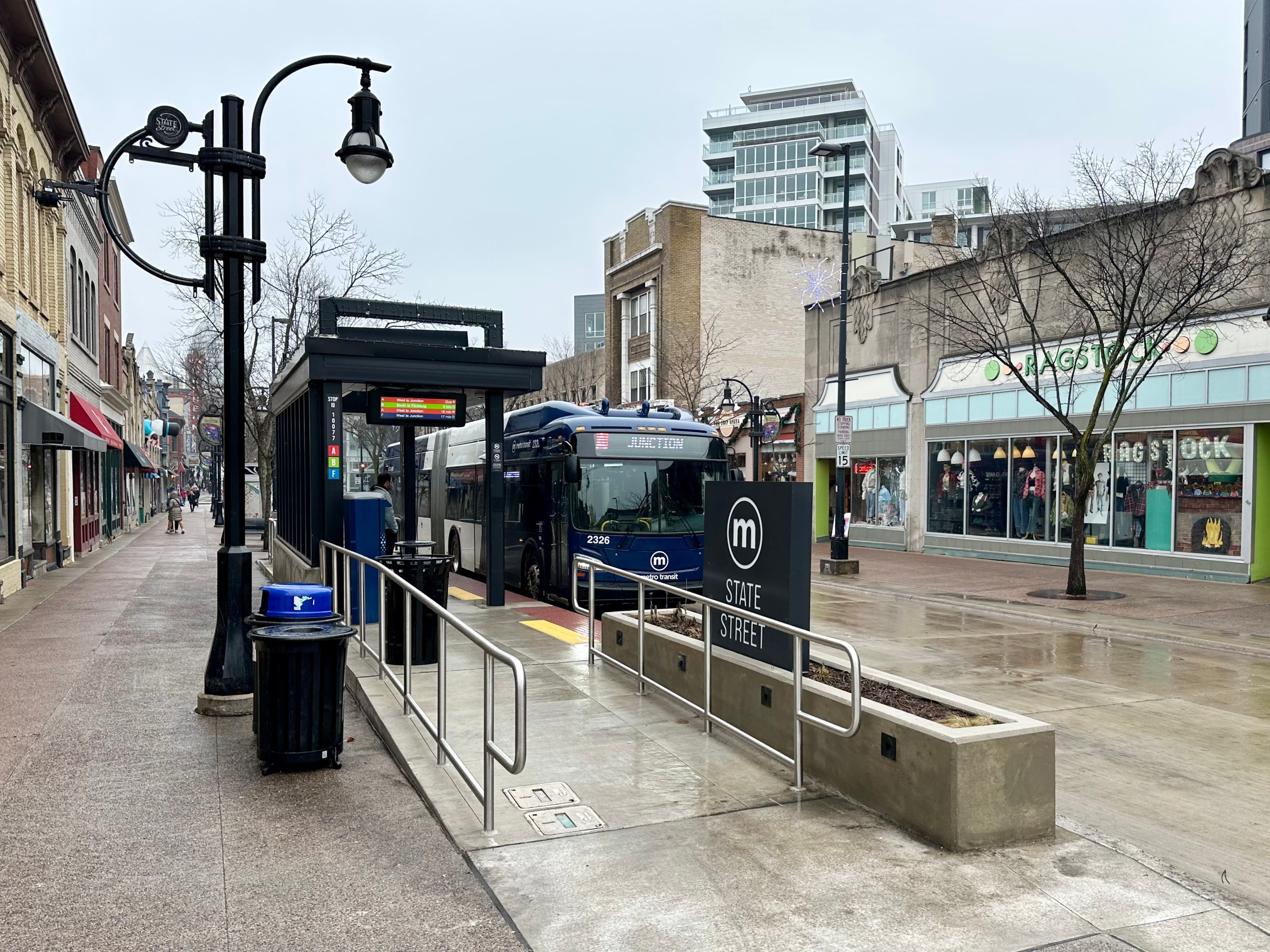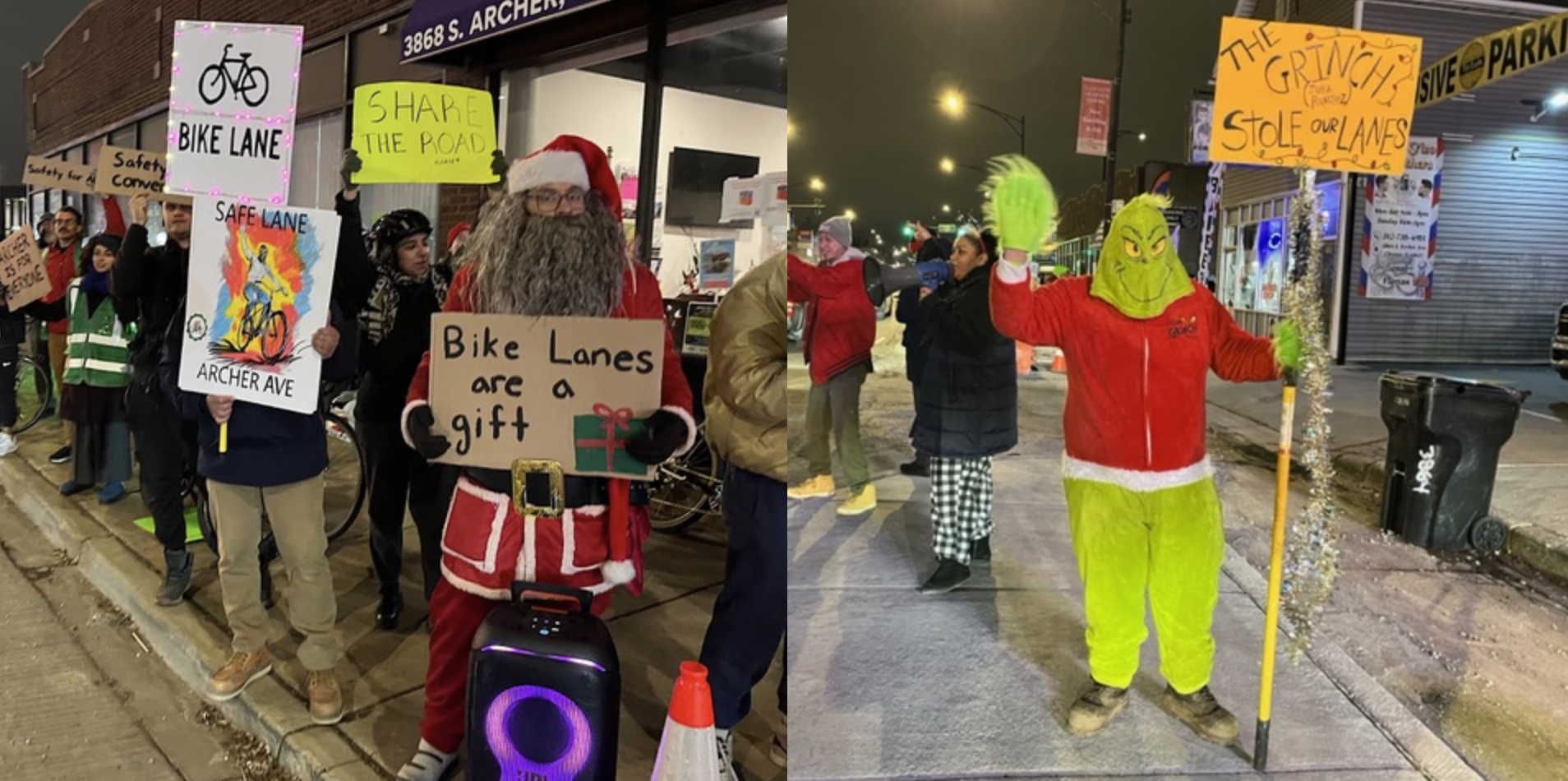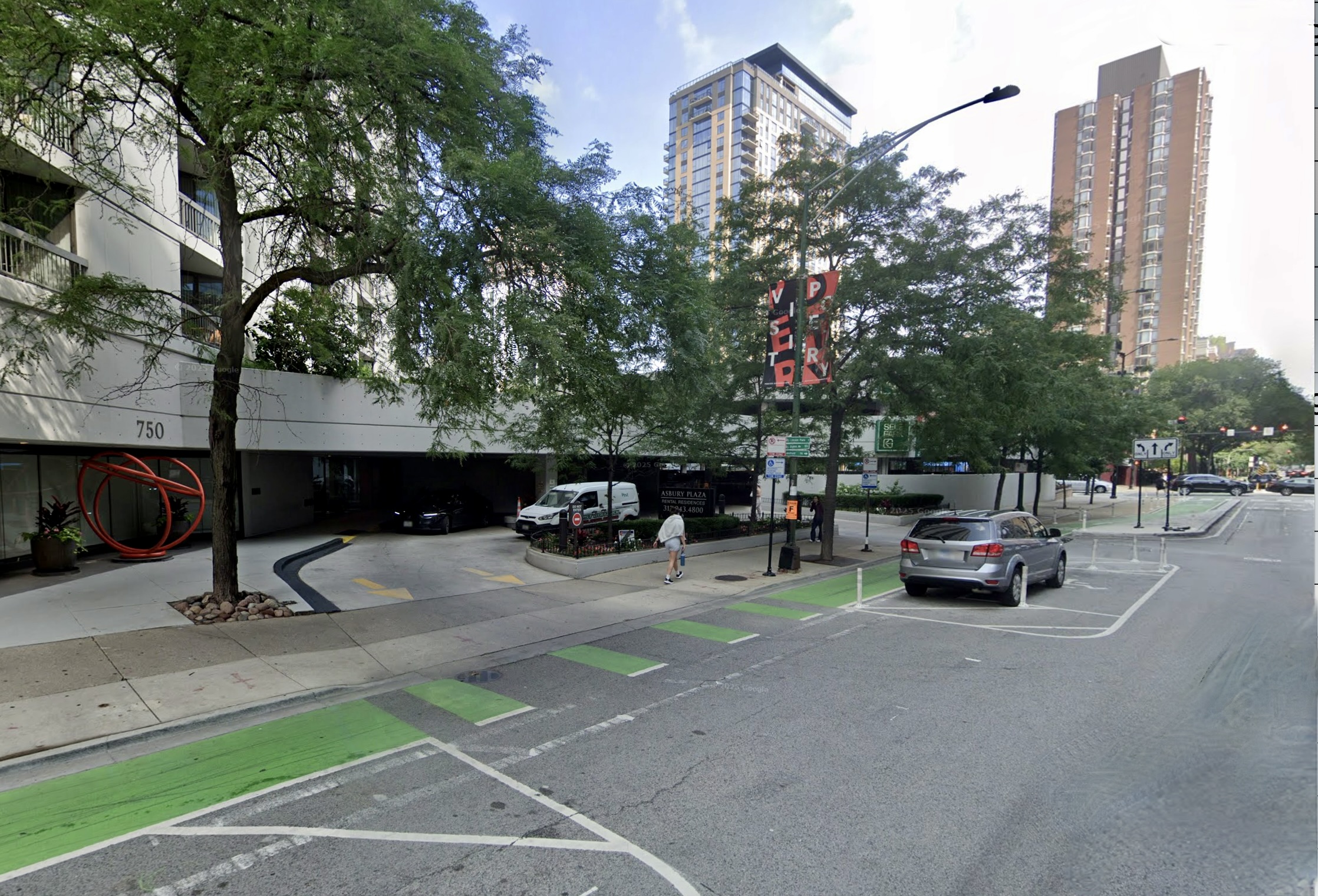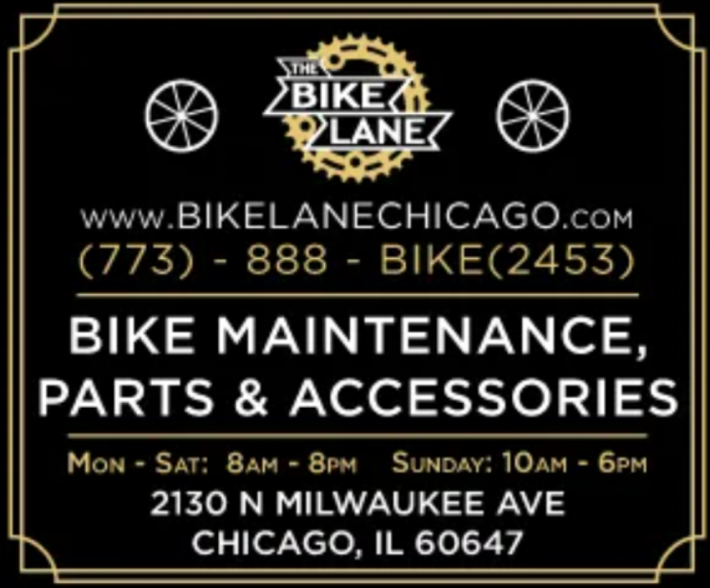
Despite its status as the most populous city in the Midwest, Chicago infamously does not have a BRT system. So last month, I traveled to Madison to spend a day in Wisconsin's capital city to experience what it might be like to live in a midwestern city with a bus rapid transit system.
Metro Transit's Rapid Route line A officially opened in September, replacing a previous east-west bus route with a new configuration. What's new are bus lanes in the center of the street, stations that mimic those typically seen at rail stations, level boarding, and fast service.
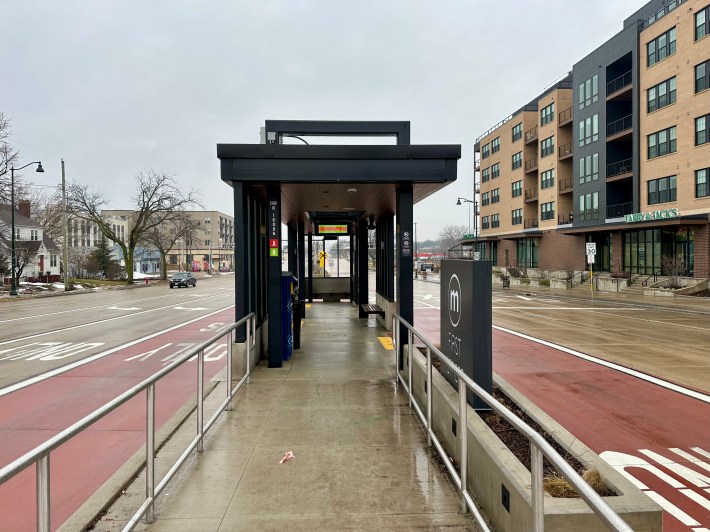
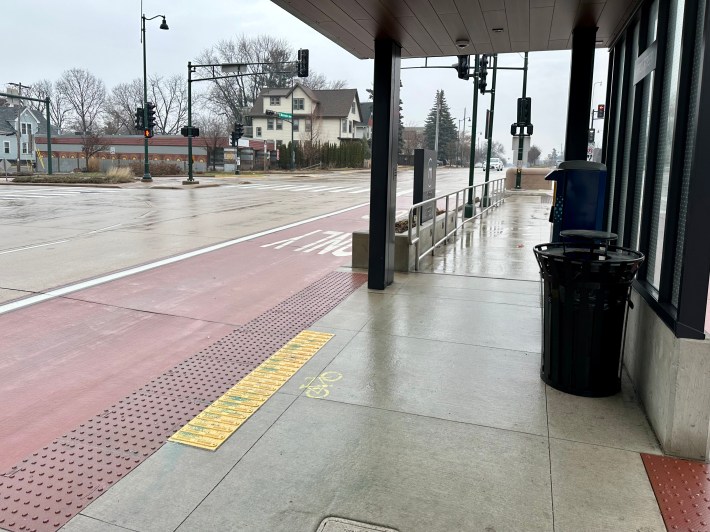
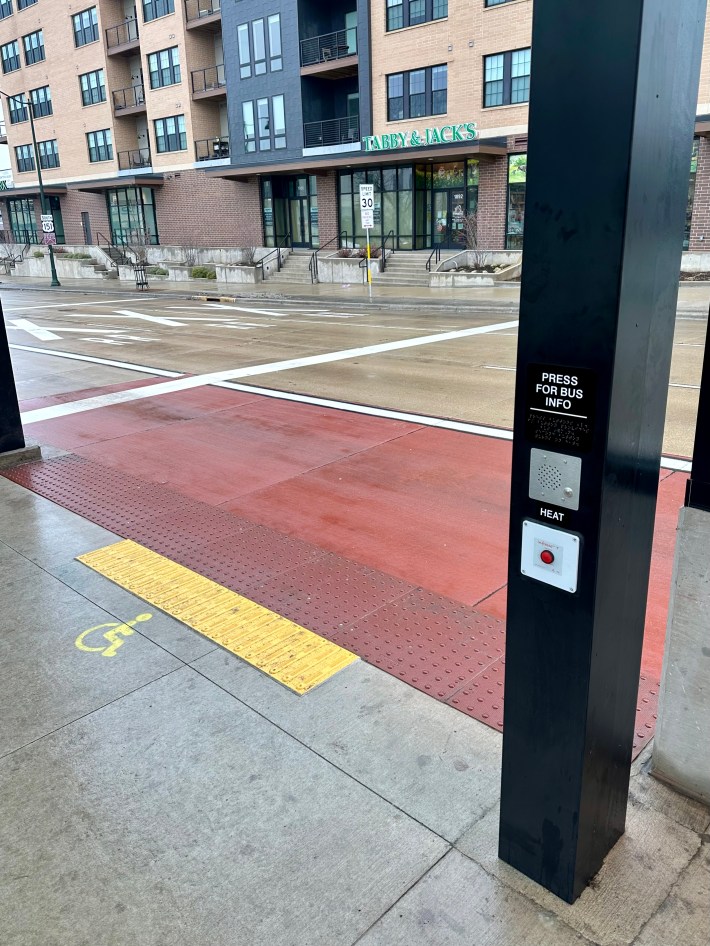
Momentum for Chicago's ambitious Ashland BRT proposal fizzled out a decade ago when mayoral hopeful Jesus "Chuy" Garcia came out against the plan during then-Mayor Emanuel's re-election bid, though the idea continued to garner attention and discussion among planners and transit enthusiasts.
Downtown Chicago's Loop Link, which was also known as Central Loop BRT in planning documents, barely achieved the BRT standard — though it included high-level bus-boarding platforms and dedicated lanes — when I reviewed it back in 2014 and skimps on key "rapid" features like off-board fare collection and signal priority. The J14 Jeffery Jump was also called a BRT line during the planning stages but a comparison to BRT standards wasn't conducted.
During my short visit to Madison, I rode the BRT twice, caught a typical bus route twice, and of course, walked. I started my journey at the First Street station and headed east through downtown, where the route winds around the capitol. I disembarked at the East Campus station on the University of Wisconsin Madison campus and headed over to State Street — which is pedestrianized except for the BRT routes and delivery vehicles — to find a burrito for lunch.
The first thing I noticed at the First Street station was the extensive shelter. Not only was there a canopy, but side walls enclosing the shelter from the "roof" to the ground, overhead heating, skylights, and openings aligned with the buses' doors. Markings on the floor denoted which opening was for people with disabilities and which was for people bringing their bicycles aboard.
After boarding, passengers pay for the ride by tapping a new Metro Transit smart card that works like Ventra, or by showing a QR code obtained through the agency's new app. There are five readers on the buses — one at each door to facilitate all-door boarding. Being able to alight via any door is part of the BRT standard, which was created and stays updated by the Institute for Transportation Development Policy (ITDP). This is one reason why Chicago's Loop Link was unable to achieve the BRT standard.
There was something else unique about the buses: passengers could bring their bicycles inside the vehicle and park them in a designated area that had a rack to secure bikes' front wheels. Straps that looked like seat belts are used to hold the bike upright.
What was particularly noticeable, however — and a big reason why I wanted to try Rapid Route — was the speed and efficiency. In the section where I boarded along Washington Avenue, buses run in an exclusive center lane, free of other vehicles. The intersections were modified to ensure car drivers have left turn signals so they wouldn't turn left across the path of a bus going as fast as the street's speed limit.
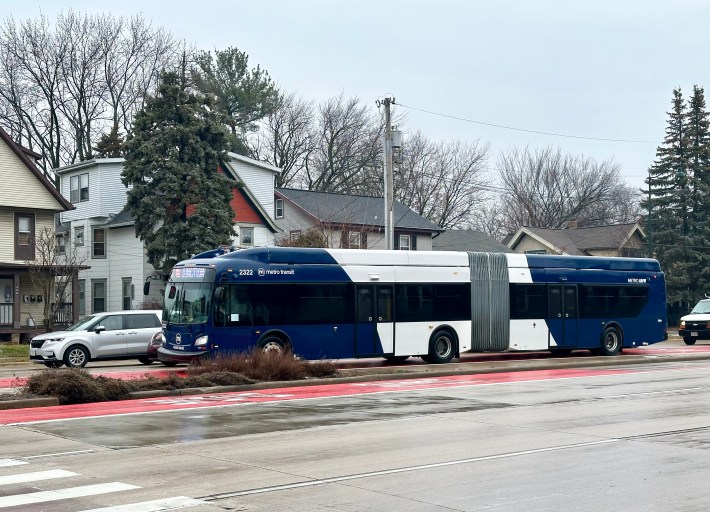
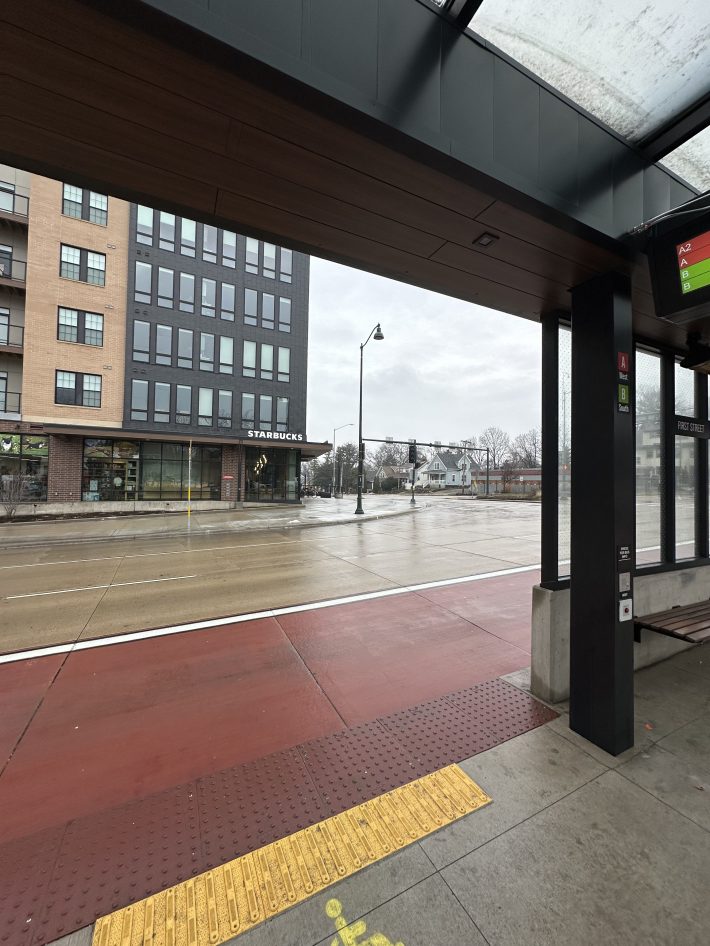
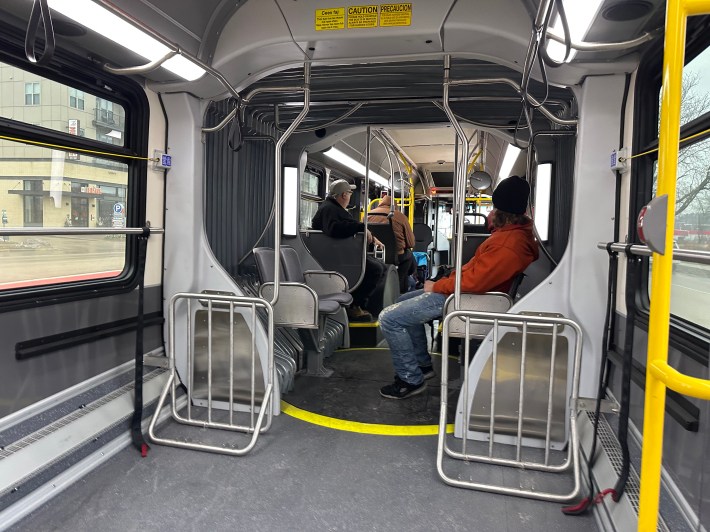
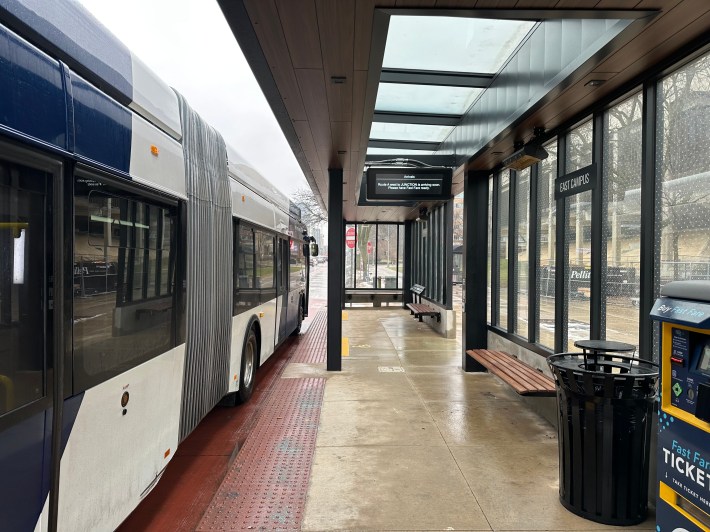
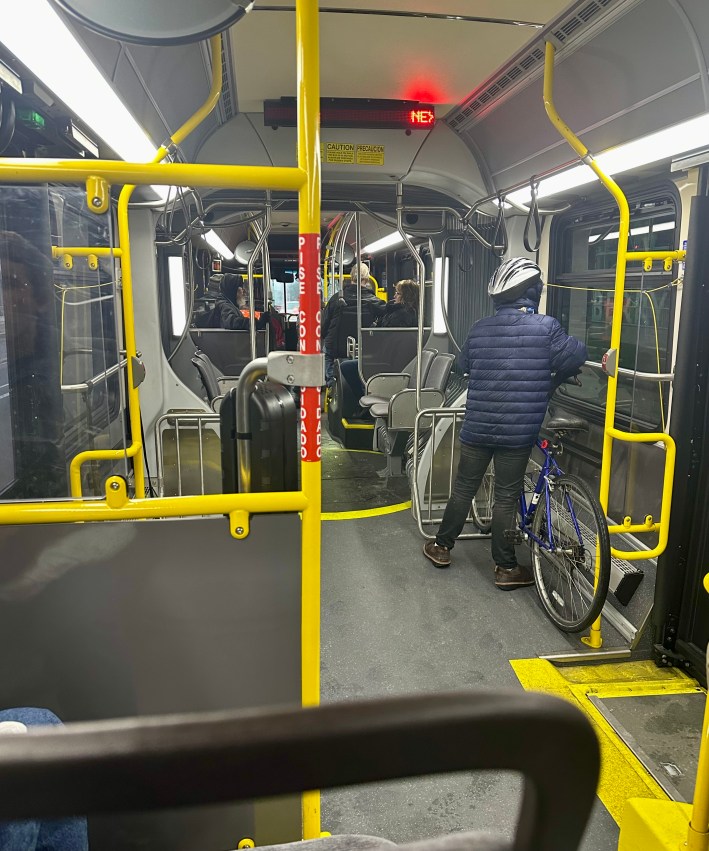

Another way to speed up buses, which isn't necessary to call it a BRT, is stop spacing. The first route segment I rode had stops a half-mile apart. Most CTA bus routes, on the other hand, have stops every quarter mile, potentially stopping twice as often as Madison's first BRT route. (Metro Transit plans to open another BRT route in 2028.)
Bus-only lanes also give the system an edge when judged on reliability of headways, or the consistency of buses coming the promised every 15 minutes, as buses won't get behind other vehicles. In the limited time I was there I noticed that buses were adhering to that frequency. The BRT schedule shows 15-minute service between 6:00 a.m. and 8:00 p.m., with different headways before and after those times. While this frequency is not ideal (most CTA bus routes beat this), reliability of schedule is its own advantage and schedule adherence becomes more important.
I attempted to review the Madison BRT's features against ITDP's scorecard and while I was able to confirm it meets the basic BRT standard, the scorecard has gotten more complex over the last 10 years and there are project details I'm not aware of. For example, the scorecard assigns maximum points if an entire route has bus lanes (and I don't know which segments Rapid Route A uses don't have bus lanes). ITDP has the scores of other BRT systems in the United States and globally.
Indianapolis and Cleveland are the only two other Midwest cities with proper BRT systems. I asked Michael Metz, a suburban Chicago transit rider, to offer some observations since he has ridden many BRT lines including those in Madison and Indianapolis.
Madison and Indy went ahead with BRTs because it was easier to build the infrastructure, cheaper to build the infrastructure, less legal headaches on all levels of government to implement, was far more effective than a streetcar/light rail line being built over the same distance.
Both systems deliver on their aim to reduce the amount of stops, speed up buses, and add additional capacity to the routes that they replaced by utilizing all door boarding, level platform boarding, and articulated buses.
Madison's goal was to increase access to high quality infrastructure in lower income areas across the cities while delivering on projects that would have the biggest return on investment for Metro.
Metz rode the Madison Rapid Ride on opening day and filmed this video, which gives viewers a good look at the different infrastructure components and relative speed of traveling in exclusive lanes.
The CTA has no plans to build a BRT line but some city council members have called for BRT on Western Avenue, to coincide with broad proactive upzoning that can redevelop the "stroad" into something safer and more desirable to be around.
